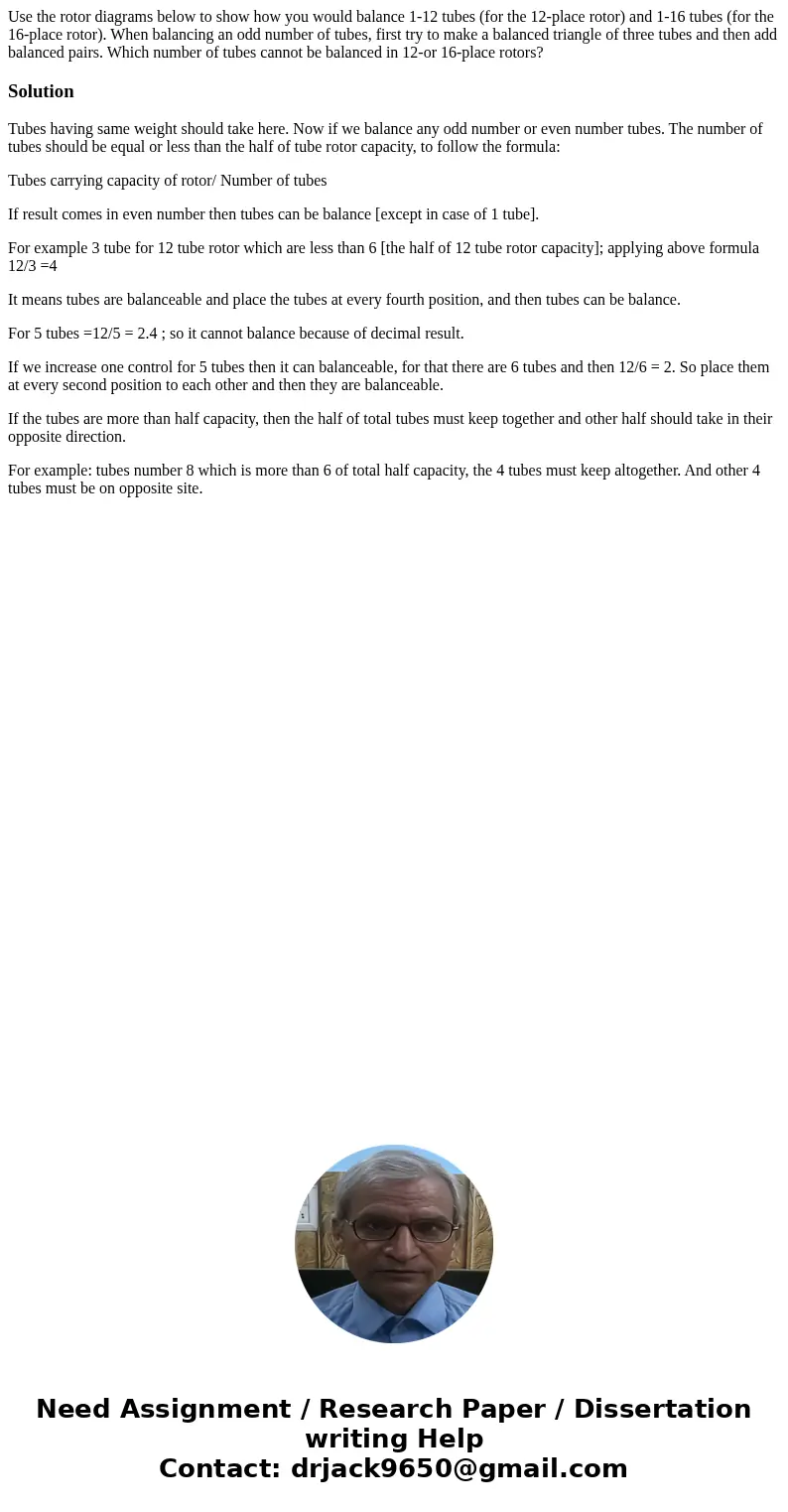Use the rotor diagrams below to show how you would balance 1
Solution
Tubes having same weight should take here. Now if we balance any odd number or even number tubes. The number of tubes should be equal or less than the half of tube rotor capacity, to follow the formula:
Tubes carrying capacity of rotor/ Number of tubes
If result comes in even number then tubes can be balance [except in case of 1 tube].
For example 3 tube for 12 tube rotor which are less than 6 [the half of 12 tube rotor capacity]; applying above formula 12/3 =4
It means tubes are balanceable and place the tubes at every fourth position, and then tubes can be balance.
For 5 tubes =12/5 = 2.4 ; so it cannot balance because of decimal result.
If we increase one control for 5 tubes then it can balanceable, for that there are 6 tubes and then 12/6 = 2. So place them at every second position to each other and then they are balanceable.
If the tubes are more than half capacity, then the half of total tubes must keep together and other half should take in their opposite direction.
For example: tubes number 8 which is more than 6 of total half capacity, the 4 tubes must keep altogether. And other 4 tubes must be on opposite site.

 Homework Sourse
Homework Sourse